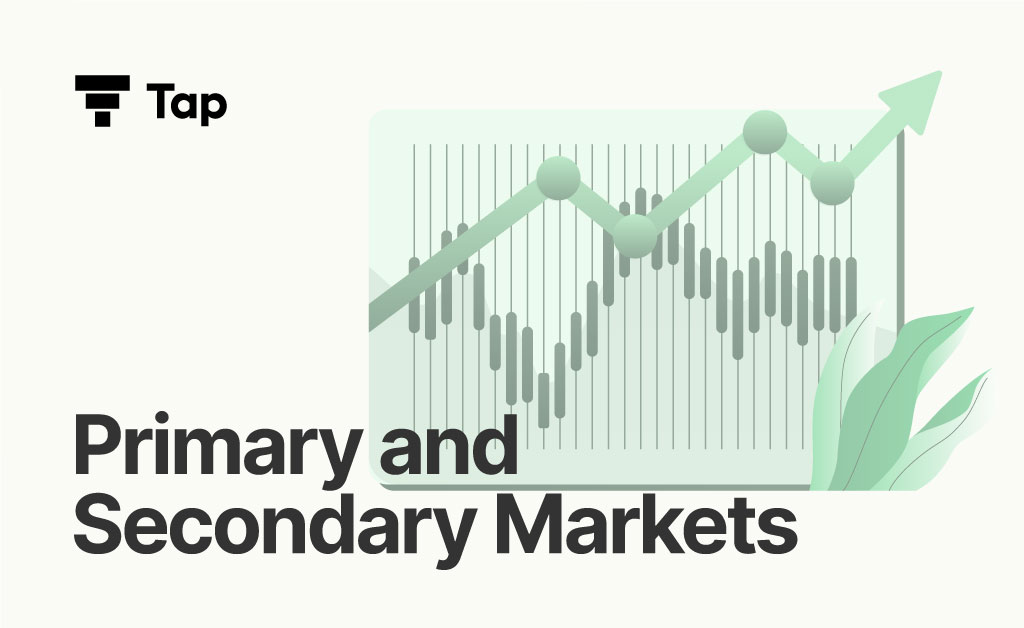Differentiating Primary and Secondary Markets

Introduction:
In the world of finance, primary and secondary markets play pivotal roles in facilitating the buying and selling of securities. Whether you’re a seasoned investor or just starting your journey in the financial realm, grasping the fundamentals of these markets is crucial. In this comprehensive guide, we’ll delve into the intricacies of primary and secondary markets, exploring their functions, differences, and significance in the global economy.
What is the Primary Market?
The primary market serves as a platform where companies issue new securities, such as stocks and bonds, to raise capital for various purposes, including expansion, debt repayment, or funding new projects. Investors directly purchase these securities from the issuing company, thereby injecting fresh capital into the business. Notable methods of issuance in the primary market include Initial Public Offerings (IPOs), Follow-on Public Offerings (FPOs), rights issues, and private placements.
- The primary market involves the initial issuance of securities by companies, while the secondary market facilitates the trading of existing securities between investors.
- Investors, including institutional investors, retail investors, and high-net-worth individuals, participate in the primary market by purchasing newly issued securities directly from the issuing company.
- Notable methods include Initial Public Offerings (IPOs), Follow-on Public Offerings (FPOs), rights issues, and private placements.
- By issuing new securities and raising capital, companies can fund expansion initiatives, repay debts, or finance new projects, thereby fueling their growth trajectory.
What is the Secondary Market?
Contrary to the primary market, the secondary market is where existing securities are bought and sold among investors without the involvement of the issuing company. This market provides liquidity to investors, allowing them to trade securities freely based on supply and demand dynamics. Major secondary markets include stock exchanges, where shares of publicly listed companies are traded, and bond markets, where fixed-income securities are bought and sold.
- While the primary market involves the issuance of new securities, the secondary market facilitates the trading of existing securities among investors.
- Liquidity is crucial in the secondary market as it enables investors to buy and sell securities easily, providing an exit or entry point to their investments.
- The secondary market trades a wide range of securities, including stocks, bonds, derivatives, and foreign exchange instruments.
- Prices in the secondary market are determined by supply and demand forces, reflecting investors’ perceptions of a security’s value.
Key Differences Between the Primary and Secondary Markets:
Nature of the Market:
The primary market involves the issuance of new securities, while the secondary market facilitates the trading of existing securities.
Issuer’s Involvement:
In the primary market, the issuing company directly sells securities to investors, whereas in the secondary market, transactions occur between investors without the issuer’s involvement.
Capital Generation:
Transactions in the primary market provide capital to the issuing company, whereas the secondary market transactions do not directly contribute capital to the issuer.
Price Determination:
In the primary market, the issuer sets the price of securities, while prices in the secondary market are determined by supply and demand dynamics.
Conclusion:
Understanding the nuances of primary and secondary markets is essential for navigating the complex landscape of financial markets. While the primary market facilitates the issuance of new securities, the secondary market provides liquidity and enables investors to trade existing securities freely. By grasping the functions and differences between these markets, investors can make informed decisions and navigate the financial terrain with confidence.
Are you a regular investor? or, looking for such informative content? Visit TapInvest and explore various investment options for you only!
FAQs On Primary And Secondary Markets
1. What Is the Difference Between the Primary Market and Secondary Market?
The primary market involves the issuance of new securities directly by the company to investors, with funds raised going to the company for business purposes. On the other hand, the secondary market is where existing securities are traded between investors without the issuing company’s direct involvement.
2. What Are the Functions of the Primary Market and Secondary Market?
The primary market makes it easier for companies to sell new securities and raise money. The secondary market provides liquidity and allows investors to buy and sell existing securities, facilitating price discovery.
3. What Is the Primary and Secondary Market in India?
In India, the primary market is where new securities are issued and sold through methods like IPOs, FPOs, and rights issues. The secondary market is where securities that have already been issued and listed on stock exchanges are bought and sold.
4. Is an IPO an Example of the Secondary Market?
No, an IPO is an example of the primary market because it involves the first-time issuance and sale of shares to the public by a company.
5. Who Buys in the Primary Market?
In the primary market, investors buy newly issued securities directly from the issuing company. This includes institutional investors, retail investors, and high-net-worth individuals.
6. What Are the Four Primary Markets?
The four primary markets include the Initial Public Offering (IPO) market, Follow-on Public Offering (FPO) market, Rights Issue market, and Private Placement market.
7. What Are the Four Secondary Markets?
The four secondary markets are the Stock Market (Equity Market), Bond Market, Derivatives Market, and Foreign Exchange Market
